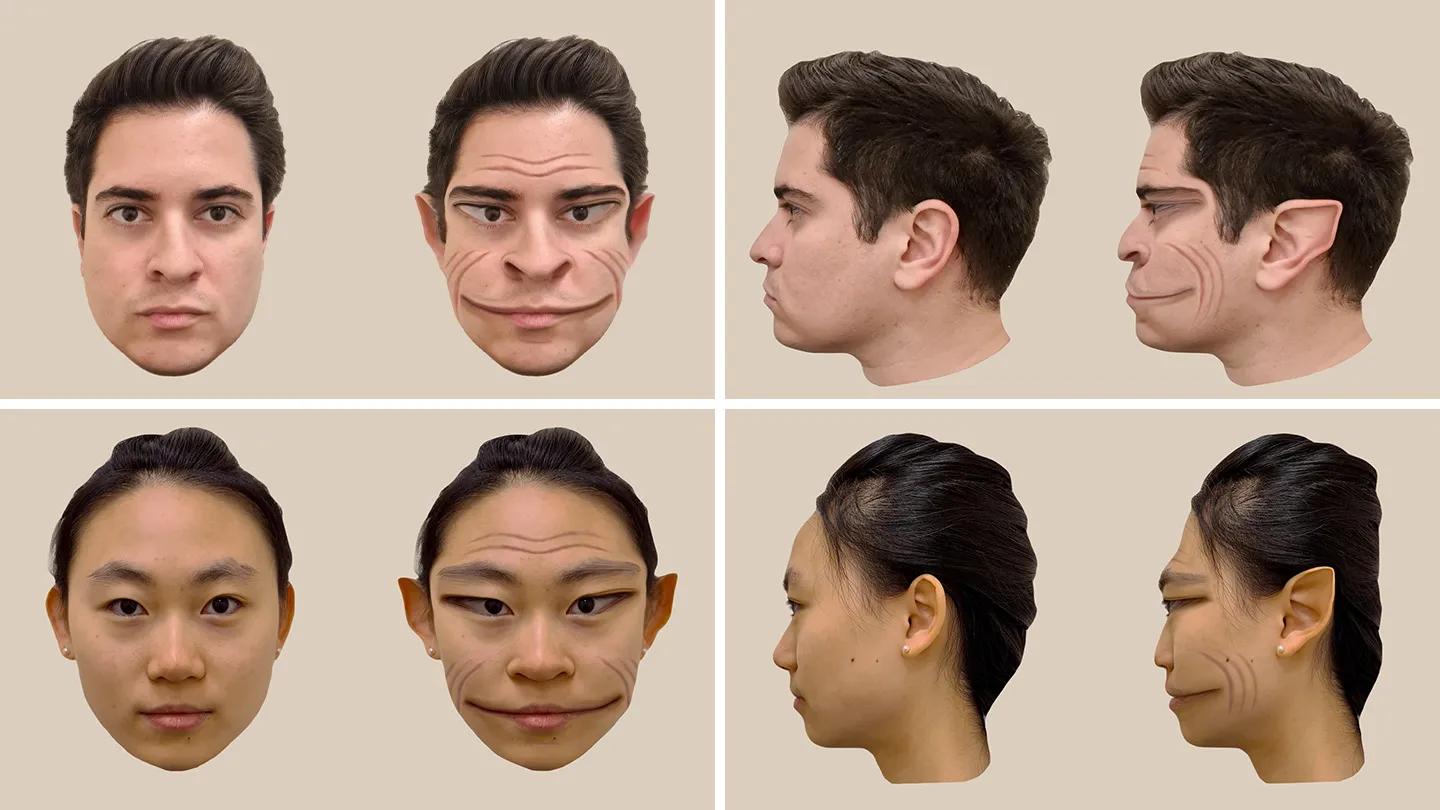
These are the altered facial appearances that persons with prosopometamorphopsia may experience.
Picture someone’s face. Now assume there was a probability that the face would always look warped when you gazed at it. That is the life of an individual suffering from prosopometamorphopsia, or PMO. You can now see the world through the eyes of someone who has this uncommon ailment, owing to a recent study.
Dartmouth College researchers used input from a 58-year-old man who has had PMO for almost three years to manipulate pictures of people’s faces to resemble the “demonic” distortions he felt. According to psychologist Antônio Mello and colleagues, this is reportedly the first time visuals have been produced to so nearly mimic what a patient with the illness is seeing (March 23, Lancet).
According to Mello, “we hope this has a big impact on people’s perceptions of PMO, especially so they can understand how severe PMO can be.” He cites one patient in particular who disliked going to the store because other customers appeared to be “an army of demons.”
PMO is not well known; since 1904, less than 100 cases have been reported. A vast range of face deformities are reported by patients. Others may notice distortions that cause features to shift in position or alter in size, but the patient in this study saw highly stretched features with deep grooves on the face.
As a result, according to Jason Barton, a neurologist at the University of British Columbia in Vancouver who has previously collaborated with the researchers but was not part in this study, this depiction is patient-specific and wouldn’t apply for everyone with PMO. Nevertheless, “I believe that understanding the different kinds of distortions people can see is helpful to people.”
The case’s peculiarities made it possible for researchers to precisely portray the patient’s distortions. Initially, the patient only perceives them in faces that are seen in person—not in faces that are seen on a screen or on paper. Most PMO sufferers are unable to distinguish between the two. Additionally, unlike most other patients with the syndrome, this patient’s deformities are constant.
The patient was able to compare a distorted face (the person in the room) with the same non-distorted face (the photo on a computer screen) by placing a person next to a photo of the person in a similar location. He explained the variations to the researchers, who then used a computer software to adjust the pictures until the patient verified that the changed picture accurately represented their features.
Mello thinks the visualization will inform medical professionals about this underdiagnosed illness. His team has received over 70 cases of PMO symptoms since the debut of their website a few years ago, many of which were misdiagnosed. According to Barton, it’s frequently thought of as a psychological issue rather than a neurological one, similar to schizophrenia.
Neurologists can treat conditions like seizures or strokes that cause post-traumatic mood disorder (PMO) when they are correctly diagnosed. However, the precise mechanisms causing the distortions are still unknown, and occasionally they afflict individuals who don’t seem to have any underlying medical issues. According to Mello, a deeper comprehension of the mechanisms may be beneficial for those who suffer from PMO as well as a greater grasp of face processing in general (SN: 1/5/17).



